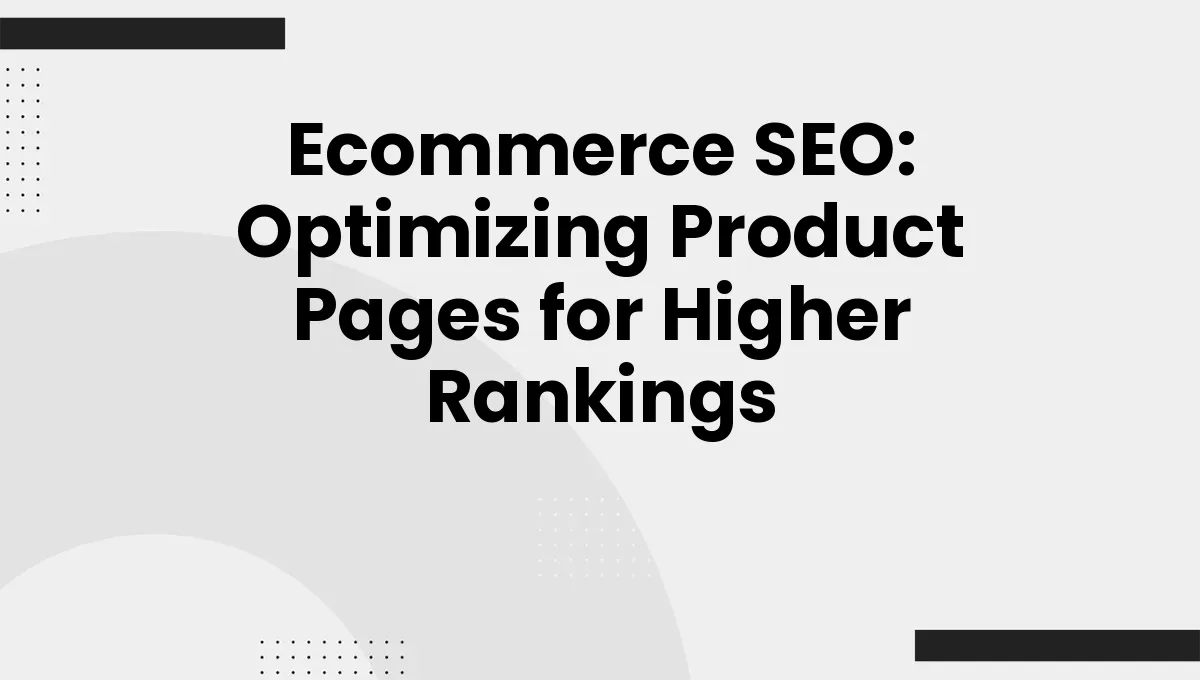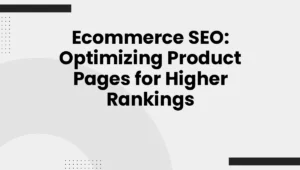Ecommerce SEO: Optimizing Product Pages for higher Rankings
In the cutthroat landscape of online retail, having a visually stunning website is no longer enough. For businesses like yours, selling products online, understanding and mastering ecommerce SEO isn’t just a nice-to-have; it’s an absolute necessity.If you’re looking to boost your brand’s visibility, drive organic traffic, and ultimately increase conversions, then optimizing your product pages should be at the forefront of your strategy. Let’s dive in and explore actionable tactics to elevate your ecommerce game.
The Importance of Product Page Optimization
Think of product pages as your digital storefront. They’re not just about showcasing products; they’re a conversion powerhouse waiting to be unleashed. A well-optimized product page not only elevates user experience but also improves search engine rankings.According to studies, 93% of online experiences begin with a search engine, and if you’re not appearing on the first page, you might as well be invisible.
Let’s get started with some core principles and actionable strategies to optimize your product pages effectively.
1. Keyword Research: The Cornerstone of Your Strategy
Before you can optimize, you need to understand what your audience is searching for. Identify relevant keywords that potential customers use when looking for products similar to yours. Here are actionable steps:
- Use Keyword Tools: Tools like Google Keyword Planner, Ahrefs, and SEMrush can reveal valuable data about search volume and competition.
- Focus on Long-Tail Keywords: While they may have lower search volume, long-tail keywords often have higher conversion rates. Rather of just “running shoes,” consider “best running shoes for flat feet.”
Remember, every product page should target a primary keyword alongside a few related secondary keywords.
2. Crafting Compelling product Descriptions
your product description is what turns a click into a sale. Avoid generic, boring descriptions that just list features. Instead,tell a story. For example, rather of saying, “These shoes are light and comfortable,” consider something like, “feel the freedom of flight with our feather-light running shoes, designed to support your feet during those long, challenging distances.”
Key Tips:
- Highlight benefits Over Features: Customers want to no how a product will improve their lives.
- Use Persuasive Language: Words like “exclusive,” “limited edition,” or “bestselling” can create a sense of urgency.
- Incorporate Keywords Naturally: Weave your keyword(s) into the description in a way that makes sense and flows well.
3. optimizing Product Images
In ecommerce, images are your silent salespeople. They need to be high quality and optimized to help your SEO efforts. Here’s how you can do that:
- Use Descriptive File Names: Instead of “IMG1234.jpg,” use “best-running-shoes-flat-feet.jpg.”
- Add Alt Text: Use relevant keywords in your image alt text. This helps search engines understand your visuals while improving accessibility.
- Optimize for Speed: Compress images to speed up page load times.A delay of just 1 second can drop your conversions by 7%, so don’t let slow images be the reason you miss out on sales.
4. Structured Data: The Secret Weapon
Implementing structured data (schema markup) gives search engines more context about your products. This helps to improve visibility and click-through rates (CTR) with rich snippets.
- Basic Product Schema: Include information like price, availability, and product ratings. This not only helps with ranking but also enhances the quality of your search listings.
- Use Google’s Structured Data Testing Tool to ensure your markup is implemented correctly.
5. Leverage User-Generated Content
Customer reviews and testimonials are golden assets. Incorporating user-generated content can also improve your SEO.
- Encourage Reviews: Ask customers to leave feedback. The more reviews you have, the more content you generate, which can help with rankings.
- Feature Q&A Sections: Address common questions customers might have about the product right on the product page.
6. Internal Linking: Connecting the Dots
Don’t underestimate the power of internal linking. Linking to related products or categories helps search engines crawl your site more effectively and improves the user experience.
Best Practices:
- Use descriptive anchor text.
- Ensure all links are relevant and add value for the reader.
Conclusion: Take Action Today
Ecommerce SEO isn’t merely an option; it’s an integral part of your online marketing strategy. When you optimize product pages with the actionable strategies above, you’re not just improving your rankings; you’re enhancing user experience, driving traffic, and increasing conversions.
At Cham Agency, we’re committed to helping businesses like yours thrive in the digital landscape.Implement these strategies, keep refining your approach, and watch as your online store begins to climb the SERPs.
Remember: SEO is a marathon, not a sprint. Each optimization you make today is a step towards a more visible and profitable ecommerce business tomorrow. So, what are you waiting for? Take action now, and let’s embark on this journey to digital success together!









